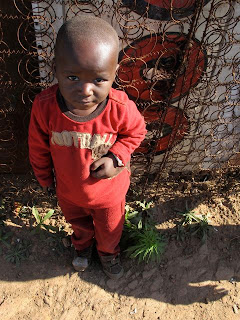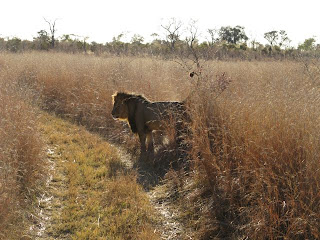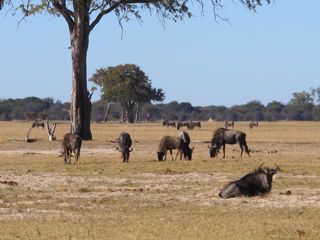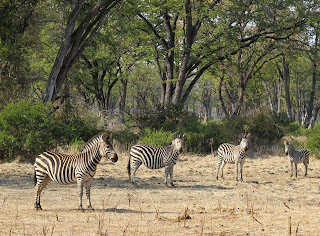Forty Hours en route to South Africa – Lift off on June 21, 2011.
Just two days ago, Alisha, John and I were packing up my jewelry booth at the Vallejo Pirate’s Festival after a successful and spirited show.
 |
| Marty, John and Alisha at the Pirate Festival |
John and I now sit in the Chicago O’Hare airport, waiting for our plane to London to depart. Our final destination, 30 hours from now is Johannesburg, South Africa.
I spend Monday in a flurry, working in my office and pass the Marty Magic baton to my husband Art and my assistant, Kat. John and I are mostly packed, but there are many last minute details to handle and we don’t pull out of our driveway until 8:30 P.M. several hours later than planned.
Art chauffeurs us to the S.F. airport and we sleep a few hours at the Holiday Inn before catching our 5:00 A.M. hotel shuttle to the airport. Our United Airline check- in and flight is easy and we doze most of the way to Chicago, but the 4 hour lay-over in Chicago is painful. The news report on the overhead television announces that Michelle Obama and her daughters are visiting South Africa this week, so we will be in good company.
We board our Chicago to London flight at 7:10 P.M. on Tuesday and after eating a tasteless, British Airway dinner, try to sleep. I manage an uncomfortable 4 hours, but John, his long body contorted awkwardly in the cramped economy seat, sleeps little.
 |
| London Tube – Mind The Gap! |
 |
| John and the London Parliment Skyline |
It is Wednesday, June 22nd and we arrive in London at 6:55 A.M, are quickly through immigration and on our way into London via the Underground. Both John and I are running on adrenaline and we easily navigate the “Tube” with just one line change, towards Westminster. An automated voice, announces each station, reminding passengers to “mind the gap.” An hour later, we arrive at Westminster station, feed our tickets into the exit turn style and climb the stairs up to street level.
The spire-studded skyline of Big Ben, the parliament, and Westminster Abby welcomes us. It is a familiar sight for me, but John is duly impressed and excited to be in London, if ever so briefly. The morning is cold and gray and we cross the Thames River via the Westminster Bridge to get another view of the impressive, Westminster skyline. The London Eye, a huge Ferris wheel, offering stunning views of London on a clear day, dominates the opposite bank and we drop down along its river front promenade in search of hot coffee and breakfast, but most of the eateries and shops along this touristy stretch of river are not yet open. We cross back over the Thames via the Hungerford Bridge, walking towards Trafalgar Square and choose Garfunkel’s restaurant for breakfast. The hot and frothy cappuccinos are excellent, but the two for one English breakfast leave much to be desired. The eggs are undercooked and gelatinous, the sausage odd and the fried tomatoes slimy and cold. Leaving the restaurant, we skirt around Trafalgar Square, popping into St. Martin-in-the-Fields Cathedral. Too late, I realize that it is the Crypt Café, below the church, where my friend Alison, recommended that we eat. We cut through the Victoria Embankment Gardens, turn away from the river and within a few blocks arrive at the covered, Covent Garden market. We spend an hour wandering these shops and open air craft market and then walk towards Neal Street. John finds a skate shop of interest to him, and a few other trendy men’s boutiques. We convert pounds to dollars and are shocked by how expensive everything is. One of my favorite shops in the area is Neal’s Yard Remedies, a skin care and aromatherapy boutique. Years ago, my friend, Alison, told me about this shop and whenever I am in London, I make a point of visiting this unpretentious, natural remedy boutique. John entertains himself sniffing and testing the many samples and comments on the wonderful scents. It’s been 5 years since I have been to London and I hope that the designer jewelry shop, the Crazy Pig, is still in business. We find the shop straight away and spend 20 minutes inside, looking at the outrageous skull, alien and animal jewelry. It is a small boutique and John and I look rather road weary, but no one greets us or asks if we need help and we are the only customers and obviously very interested. Strange, and not the Marty Magic way of conducting business.
 |
| The London Eye |

|
| Courtyard of Westminster Abby |
We navigate back towards Westminster, walking mostly along the Thames. It’s the height of the season and tour buses are nose to tail, parked along the street, many regurgitating hoards of young back packers onto afternoon barge tours along the Thames. Double –Decker buses are taking other tourists on city tours and for John’s sake, I wished we had time for an overall city tour, but Westminster Abby is our destination. It is starting to drizzle when we arrive at the Abby and there is a very long line waiting for entry, but also a shorter line for cash only. Happily, I ordered pounds in advance from my bank back home and within a few we are inside this cathedral. (Thanks again to Alison, John has brought his student I.D. and the entrance fee for him is 7 pounds as opposed to 18 pounds.) We collect head sets, included in the entrance fee, and dutifully push each corresponding button and make our way slowly through this remarkable cathedral. John is fascinated with the many tombs and the “trippy” gothic architecture. We are in no hurry and spend two hours, intermittently sitting to rest and to absorb the magic of the place.
When we exit it is raining hard, so instead of exploring further, we dash towards the entrance of the Underground and buy our return tickets to Heathrow. An hour later, we are at international terminal 5, with another 3 ½ hours to wait before our departure to Johannesburg. The time difference and our lack of sleep is catching up with us and we want only to board the plane and sleep; but our gate will not be announced for several hours and I am afraid that if we sit we may fall asleep and miss our plane. We eat an overpriced airport dinner and wander in a daze, the maze of glitzy airport shops. I am stupid with exhaustion and check and recheck the departure board. I have in my mind that our flight leaves at 19:10, but when our departure gate is finally posted, I pull out the boarding passes and see that the flight is at 17:10. I panic, wondering how I could have been so stupid and rush to a British Airway counter. My blood pressure soars but the calm woman behind the counter points out that the boarding passes I am holding are earlier ones, for our flight between Chicago and London. We have not missed our flight after all. Earlier today, I mentioned to John how strange it was that three of our departure flights were at 10 minutes passed the hour and two of the arrival times were 5 minutes before the hour. We finally board and with the aid of a sleeping pill each, both John and I sleep most of the way to Jo’berg.
June 23, 2011. We pass through immigration easily and are relieved to be reunited with our luggage. When we exit customs, I scan the crowd, looking for someone holding up a sign with our names. Isiac, from the Lebo-Soweto Backpackers Inn is there as promised, holding the expected sign. He is personable and informative as he drives us through the terrible rush hour traffic of Jo’berg, to Soweto. The drive takes 1 ½ hours and he chooses alternate roads to bypass the worst of the traffic. We pass through the industrial outskirts of Jo’berg, buildings painted with graffiti, streets littered with trash. This area of the city reminds me of industrial parts of L.A. and the Tenderloin section in S.F.
 |
| John at the Sowetto Backpackers Inn |
We finally arrive at the Back Packer Inn, situated on a gently sloping hillside in the heart of Soweto, overlooking a sprawl of industry and humanity. The tiny inn is colorful, simple and sweet; fenced with a private raked gravel garden, several outdoor tables, pool table, dart board and a self service, honor bar with little inside it. Our small room has two lumpy twin beds and a shared bath and all is immaculately clean. Cheerful murals are painted on the bathroom walls and the communal sitting room, equipped with a small T.V. and a single computer. It is now late morning and we are hungry and order breakfast for 45 Rand, about $7.00 each. One of the female staff busies herself in the kitchen, cooking up an uninspired, but much appreciated breakfast. It’s been two days since we have been able to shower so we gather up soap, shampoo and clean clothes and walk down the hall to respective bathrooms to clean up. I lie down and try to nap because in less than two hours, we will take a 4 hour bicycle tour of Soweto.
 |
| Marty riding through Sowetto
I choose this inn because the bicycle tour runs from here at 1:00 P.M. 3 young student doctors arrive 10 minutes late, having been caught in traffic. They are in their late 20’s or early 30’s and are doing an internship at one of the city’s largest hospitals, after which they will take their exams. Two are from England and one from Australia and I am please that John will have their company on this ride. It’s a long and difficult bicycle ride uphill before we arrive at our first stop where locals of all ages are gathered in an open dirt field. There are several broken down cars, small food stalls and a corrugated tin shack.
|
 |
Sowetto Scene
|
A few people are tending fires and there is an acrid smell in the air, a combination of burning plastic, urine and beer. We are invited into the corrugated tin house to drink beer. Wooden benches line the walls of the darkened shack and four men and one woman sit with plastic tubs of beer between their feet. The cardboard cartons of Jo’Berg Beer have a warning label; “Don’t drink and walk; you may be hit and killed.” Our guide brings in a covered, round ceramic jug filled with cold home-made beer. After much explanation, he takes a drink from the jar, grunts in approval and passes the jar to John. John takes a couple of sips, sounds the expected approving “aah!” and passes the container to me. I take two swallows of the cold and bitter brew, “aah,” and gratefully pass on the container. This ritual reminds me of drinking chicha the jungles of Ecuador with the indigenous villagers.
 |
| Sowetto Beer Drinking Shack
|
 |
| Sowetto Beer Warning Lable |
 |
| John drinking home brewed beer |
 |
| Empty Beer Cartons
|
 |
| Sowetto Bicycling – Marty |
 |
| Sowetto Graffatti- Marty
With our guide leading our way, we bicycle between a long row of small cement houses.Wide eyed children play in the street and swarm around us, most holding out their hands, wanting to touch ours.We “high 5” everyone as we ride our bicycles and for me it is a challenge to stay balanced with one hand. On several occasions, a child, grabs a fast hold of my hand and offsets my balance. One of the young doctors repeatedly lifts small children into his arms, swings them around and ruffles their hair. He is playful and genuine.
|
 |
| Sowetto Children |
 |
| Sowetto Todler and Cannabis |
 |
| Sowetto Interior |
 |
| Young Sowetto Man |
We are invited into one of the tiny homes by a smiling young man in his early 20’s. The house is about 12 feet wide and 20 feet long, consisting of only two rooms.The front room is the kitchen area with a small table, a large jug of water and a few pots and pans. An open archway connects the front room to the back where there is a neatly made up double bed, a single chair and a table with a television. Electricity is available and a young woman sits in the corner chair watching the T.V. A bare light bulb hangs from the ceiling and thin mattress leans up against the bare wall. The young man tells us that he is one of 5 who live here and our guide explains that he is lucky, since many of these homes, house up to 7 people. The residents in this area haul water from a central water spigot behind communal cement out houses. Each toilet is assigned to a designated group of 15; they are given a key and responsible for keeping their facilities clean. John is amused to look down and see a small pot plant growing at the edge of a building. Two small children stand on either side of it, curiously looking up at him and John snaps a photo. We ride through many sections of Soweto, many with less than adequate conditions for the inhabitants and others that look quite middle to upper class.
 |
| Sowetto Memorial |
 |
| Nelson Mandela House |
 |
| High Five -John in Sowetto |
We arrive at the Soweto museum and visit the Soweto monument to the children who were shot down in 1976 when they marched for their rights to a better education. A large spray of white flowers sits at the base of the monument, placed there by Michele Obama just yesterday. I wish that we had been here for the ceremony but we are told that the area was cordoned off; swarming with secret service personal and the bicycle tour did not run.
 |
| John WS in Sowetto at dusk. |
 |
| Young Doctors on the Sowetto Bicycle Tour |
We have a late lunch of Kota in a simple local restaurant. The men go around back to use the toilet and wash up under a spigot. I am shown to the inside bathroom with indoor plumbing and pretty lace curtains. We eat the traditional Kota a front gravel garden. It consists of a 2 ½” thick slice of white bread, the center torn out and stuffed full of French fries, salami, ham and a fried egg. The center piece of bread is used to sandwich it all together. As hungry as I am, I can only eat half of it.
After lunch we bicycle to the Nelson Mandela house, a modest, contemporary, single level house, now a historical land mark. A few other tourists are taking photos of the exterior and a handful of local teen age boys are hanging out. They gather around us, interested in John and the young doctors. The afternoon light is slanted and golden and I wish to take many photos, but bicycling and photography don’t mix well. We return to our back-packers inn shortly after 5:00 P.M. John watches an hour of television and I send my first e-mail home. After two nights sleeping on the plane, a full day in London and a 4 hour bicycle tour in Soweto we go to bed at 7:00 P.M; exhausted.
























































































































